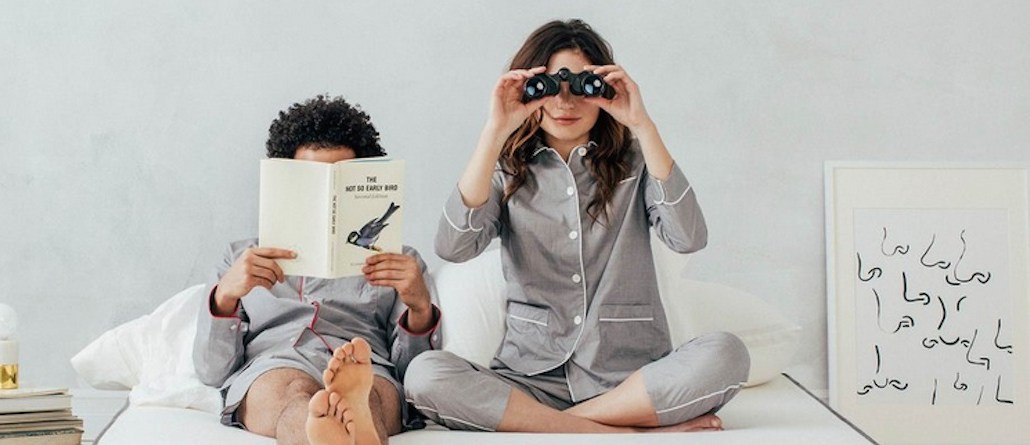
This is On the Inside, a new series from Digiday where we take a no-holds-barred tour of brands, agencies and publishers’ spaces and find out what makes them different.
Casper, a mattress company that wants to change the way we buy our beds, has in the last couple of months been busy trying to make its name in an entirely different place: journalism.
In June, the venture-backed startup that sells a mattress in a box launched Van Winkle’s, a standalone news and media website headed by former Observer editor-in-chief Elizabeth Spiers that the company says is part of their mission to own the culture of sleep.
Casper, which is two years old and boasts $70 million in venture backing, is trying to make a key link between the sale and content. What Casper is really about, say its founders, is what an investment in sleep can do for a consumer’s life. A look at Casper’s showroom, a retail space in New York’s Soho, lets customers test drive the mattress (“plenty of people fall asleep,” said a spokesperson) and hang around the apartment-like space to have a snack or maybe a mimosa on weekend mornings.
The investment in sleep begins with that experience, continues with the purchase of a mattress, and keeps going with content. That’s where Van Winkle’s comes in.
Luke Sherwin, co-founder and creative director at Casper, said Van Winkle’s is less a marketing play and more of a “big picture cultural bet.” “For us, Van Winkle’s represents an opportunity to give sleep the attention it deserves in culture.” The idea is not to push the sale too much, but eventually build a community that is playing an active part in the company’s brand voice. The brand won’t disclose what kind of traffic Van Winkle’s has seen since launching.
The site, which does not look like it is affiliated to Casper save for a small link at the bottom that links you to the company’s homepage, is staffed by five journalists (“real journalists,” said editor-in-chief Jeff Koyen) and has seven different sections.
It’s a vertical media property about sleep, said Sherwin. Articles range from the service-y — one of its most popular was a piece about how often to wash your sheets (once every two weeks) — to the investigative, like this piece about over-the-counter sleeping pills. A writer can pitch a piece and “we’ll find a way to connect it to sleep,” said Koyen, a former managing editor of the Digiday Content Studio. One writer, for example, is currently working on a long-form story about a high-profile murder of a priest in Italy. The priest reportedly had insomnia and was in the habit of taking late-night walks, which is when he was murdered. “That’s a story for us.”
It’s not an unusual bet for brands these days that are focused on building lifestyles, not just driving sales. Bevel, the shaving brand for men of color, has a distinctly separate site called Bevel Code that houses its content, a conscious decision, according to founder Tristan Walker. Airbnb launched last winter “Pineapple,” a print magazine that costs $12, featuring people from its community. And Uber has Momentum, a magazine for its drivers.
“The business proposition was really that we’re in a mattress company, soon to be more than that, and we’re in a good position to get people invested in sleep,” said Sherwin. “Maybe having the conversation benefits the competitors as well, but that’s OK.”
The exact point of having a news site without a direct link to sales is unclear, however. Van Winkle’s bigger play might be in syndication — by posting its stories on other sites and getting earned media there. The brand currently syndicates content off the site on sites like the Huffington Post, with more in the works, said Koyen. The story about sheet-washing frequency got 32,000 shares on HuffPo, said Koyen. “It says Van Winkle’s on that post, and that’s good for us,” said Koyen.
Koyen says his team’s job is “not to sell mattresses or convert people to Casper.com,” meaning they’re “liberated from the eyeball craze.” There are presently no ads on the site and no CPMs to deliver on. Asked if they might one day write a story about a competitor, like Sleepy’s, Koyen said, “there is a line drawn.” The brand may open up some programmatic slots on Van Winkle’s for non-Casper ads one day, he said.
“We’re a force for sleep,” said Sherwin. “We want thousands of people interacting with us to talk about that part of their lives.”
Video production: Hannah Yi
More in Marketing

New partnerships, marketing fuel BNPL’s holiday surge
This holiday season, more brands deployed BNPL services with different payment options beyond the more familiar “pay-in-four” structure.

Pitch deck: How Amazon is recasting Twitch as a core part of its CTV pitch
Amazon is positioning Twitch as a defining asset in its CTV ambitions.

Netflix transforms former mall department stores into experiential venues
The location in Dallas opens this week, and one at the King of Prussia mall near Philadelphia opened last month.





